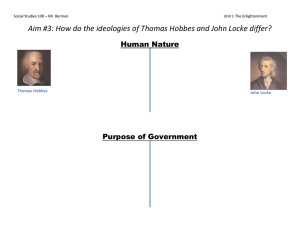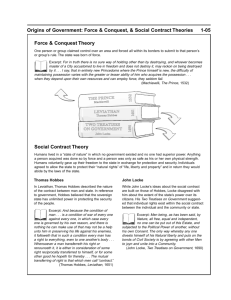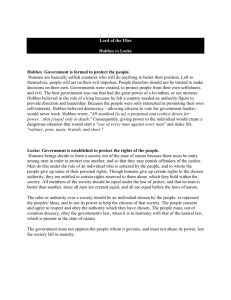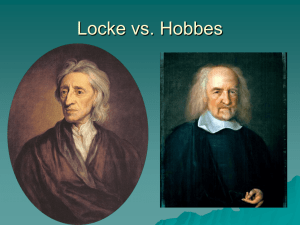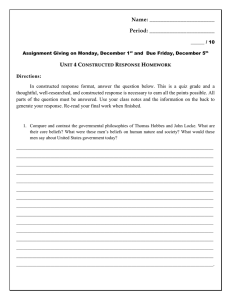The Enlightenment
advertisement
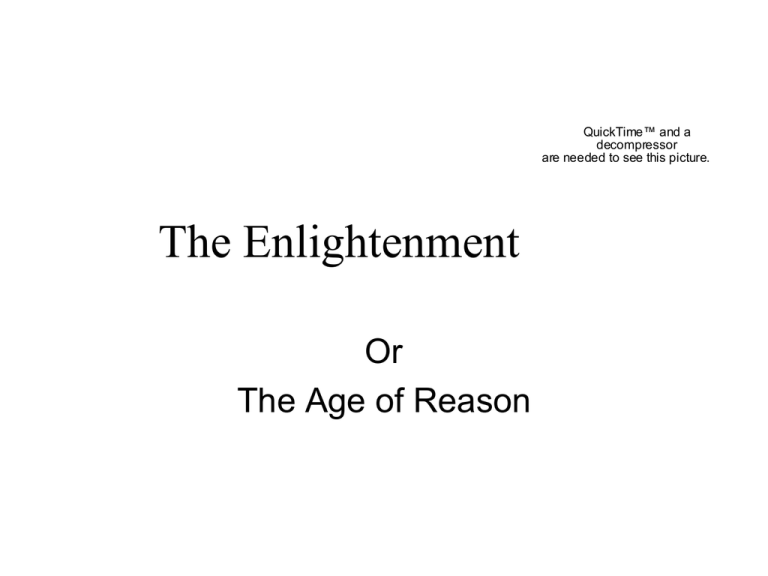
QuickTime™ and a decompressor are needed to see this picture. The Enlightenment Or The Age of Reason Medieval Western Europe • • • • Generally believed to last from 400 to 1400ish The Roman Empire falls to mark the beginning The end is more vague The discovery of the Americas (1492), Gutenburg’s moveable type printing press (1450), Martin Luther’s Thesis (1517) • The end also overlaps with the Renaissance, Reformation and Scientific Revolution Key Features of Medieval Europe • The Middle Ages was dominated by the church and feudalism • Feudalism: a loosely organized system of government in which local lords governed their own lands but owed military service and other support to a greater lord • Also marked by the Age of Chivalry, The Crusades, The Black Death, The Hundreds Years War and many other conflicts – **This was only in Western Europe/ Eastern Europe continued on as the Byzantine Empire The Medieval Age Ends • The end was brought on in large part by the Scientific Revolution and the Protestant Reformation • The end also saw the rise of the Absolute Monarchs • Absolute Monarch: a ruler with complete authority over the government and the lives of the people he or she governs Philosophy in the Age of Reason • The Scientific Revolution leads to the Enlightenment • After the Scientific Revolution the people of Europe looked at the world in a different way • After the Enlightenment they thought about the structure of society in a different way • Successes in Science lead Europeans to believe reason could improve their lives Natural Law • The Scientific Revolution taught people that Rules discoverable by reason are able to govern the natural or physical world. • If the scientific method could be used to explain the natural world why not use it to explain the behavior of people and society. • What is the scientific method? Two Philosophers Lead the Way • Thomas Hobbes and John Locke were both English but had two very different philosophies • Hobbes witnessed the English Civil War (16421649) and the execution of King Charles I • He published Leviathan in 1651 • The Leviathan outlined Hobbes’ philosophy on humanity and the role of government Hobbes’ Leviathan • Men are motivated primarily by the desire for power and fear of other men. • What were they motivated to do? • Allow an all-powerful sovereign to rule over them. • Without someone to rule them life was “solitary, nasty, poor, brutish, and short.” • Basically Hobbes thinks men are selfish and without a strong leader they would kill each other off John Locke • A generation later Locke witnessed the “Glorious Revolution” and a bloodless transition of power • In 1690 he published Two Treatises of Government • He outlined a theory of politics based on people’s natural rights of life, liberty, and ownership of property. • He believed government served the people and had to protect these rights. • He believed people were basically good not evil Locke VS Hobbes • Limited Government VS Powerful Government • People are good VS People are nasty • People form governments to protect their rights VS • People give up rights for security The Philosophes • Following Hobbes and Locke the 1700s saw a outpouring of new ideas • Applied the scientific method to understand and improve society • Conflict between new ways of thinking and old
